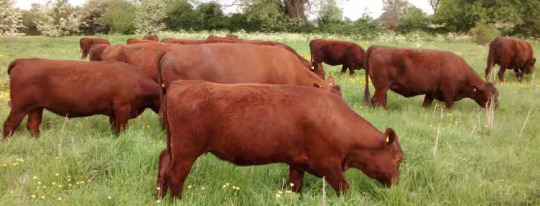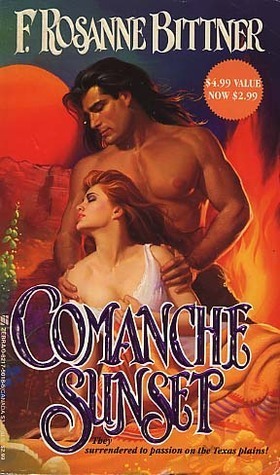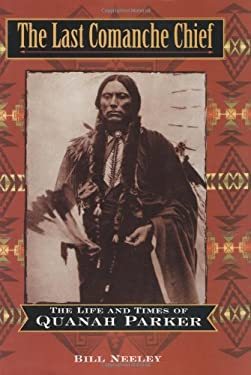#Comanche Texas
Text
Red Heifer Update: 5 Candidates & Red Dye, Tamuz 5782/July 2022
Five red heifers from a farm near Comanche, Texas have emerged as candidates for the Temple Institute in Jerusalem.
https://wassledine.co.uk/conservation-cows/red-poll-beef/
July 2022: Five red heifers from a farm near Comanche, Texas have emerged as candidates for the Temple Institute in Jerusalem.
Because of COVID 19, these red heifers were not tagged. The ranch hand who typically tags cattle in the ear at birth was not available due to the pandemic. The hole in the ear from tagging would have disqualified…

View On WordPress
#Boneh Israel#Byron Stinson#Comanche Texas#Israel 365#Numbers 19#Red Heifer#red wool#scarlet#Temple Institute
0 notes
Text

In far west Texas and eastern New Mexico, there is a land so flat you’ll swear, if you squint hard enough into the infinite horizons, that you can see the back of your head. This treeless, sand dune, canyon and grass filled country stretches some fifty thousand square miles of land that used to be called The Great American Desert but today, is called The Llano Estacado or the High Staked Plains. In the deep past, it was home to Ground Sloths, Mammoths, and Bison before Clovis, Apache, and then the Comanche. The Spanish explored it, the New Mexicans hunted buffalo on it, the Americans fought the Indians on and around it. Coronado, Oñate, Kit Carson, and Robert E Lee all travelled across or around it’s flat emptiness.
In this Roadrunner exclusive episode of the American Southwest Podcast, I cover all of that and a whole lot more as I uncover the Tierra Incognita that is El Llano Estacado. I discuss what it looks like, how it distorts the mind, the creatures that live on it, the violent weather, the history of the American Indians including the mysterious Teya, the Spanish, The French, The English, the New Mexicans, the Comancheros, the Contrabandistas, the Ciboleros, the Texans, and finally, the Americans. I introduce important Southwestern Characters, animals, peoples, cultures, and battles. I quote from great authors who wrote fantastic books about the place that only those who hunted the bison, and those that hunted the bison hunters ever dared to venture into.
This is the first of many exclusive episodes for the Subscribers or Roadrunners and at 3 hours and 30 minutes, I hope that it satisfies everyone’s desire for awesome and exciting information on the American Southwest. Thank y’all for subscribing and listening.
Sign up at Substack!
#el llano Estacado#my podcast#Thomas Wayne Riley#the American Southwest#Texas#New Mexico#history#Comanche#Apache#Spanish#American#French#Coronado#Oñate#Robert e Lee#Mexico
47 notes
·
View notes
Text
Today, the [Texas] Permanent University Fund derived from [indigenous] land is worth nearly $34 billion. That’s thanks to oil, of course, which has been flowing from the university’s trust lands since 1923. In 2022 alone, Texas trust lands produced $2.2 billion in revenue.
The Kiowa and Comanche were ultimately paid about 2 cents per acre for their land. The Mescalero Apache received nothing.
—Eliseu Cavalcante, from "Misplaced Trust," published by Grist
#quotes#essays#eliseu cavalcante#grist#landback#indigenous rights#texas#kiowa#comanche#apache#texas a&m
2 notes
·
View notes
Text

Rev. White Parker, Son of Quanah
4 notes
·
View notes
Text

#comanche lookout#personal#fitblr#fitwomen#p#texas#girls like girls#take a hike#outdoors#k9 sport sack#dogslife
15 notes
·
View notes
Text
Comanche warriors had for centuries taken female captives, of all and any race, and fathered children by them who were raised as Comanches. The kidnapping of a blue-eyed, nine-year-old Cynthia Ann Parker in 1836 would mark the start of the white man's forty-year war with the Comanches, in which Quanah Parker [Cynthia's half-breed son] would become a key figure.
The only borderland where white civilization met hostile Plains Indians was in Texas. Oklahoma was pure Indian territory, where beaten tribes were forcibly relocated, often right on top of warlike plains tribes. The Parkers' land was like the tip of a blunt finger of Anglo civilization jutting out into the last stronghold of untamed Indians in America. In 1836 it was a very dangerous place. There had been recent Comanche raids in the area: a caravan of settlers had been attacked and two women kidnapped; a month later a family had been attacked on the Guadalupe River; two men killed and a woman and her two children taken captive. She had somehow escaped, and later wandered battered, bleeding, and nearly naked into a camp full of astonished Rangers in the middle of the night. As it was, the Parkers were easy prey. They were too new to the western frontier. When a large band of Indians rode up to the fort at ten o'clock in the morning, seventeen-year-old Rachel Parker guessed incorrectly, and perhaps wistfully, that they were "Tawakonis, Caddoes, Keechis, Wacos," and other sedentary bands of central Texas - but they soon realized they had made a disastrous error in leaving themselves so exposed. Had they fully understood whom they were confronting - mostly Comanches, but also some Kiowas, their frequent running mates [and the only other tribe that hunted on horseback] - they might have anticipated the horrors that were about to descend on them.
What happened next is one of the most famous events in the history of the American frontier, as the start of the longest and most brutal of all the wars between Americans and a single Indian tribe.
[Warning: edited descriptions of disturbing violence]
Rachel Parker and her sister watched in horror as the Indians surrounded her uncle and impaled him on their lances, and then [tortured], while probably still alive. This all happened very quickly. Rachel, attempting to run with her fourteen-month old son, was soon caught, and she would write, "a large sulky Indian picked up a hoe and knocked me down." She fainted, and when she came to was being dragged by her long red hair, bleeding profusely from her head wound. Meanwhile three of her relatives were stripped naked and scalped, while her granny was [sexually assaulted] and left for dead, although she would miraculously survive. Two women and three children were taken captive. Two of those children would become household names on the western frontier. The logic of Comanche raids was straightforward: All the men were killed, and any men who were captured alive were tortured to death as a matter of course, some more slowly than others; the captive women were gang-raped. Some were killed, some were tortured. But a portion of them, particularly if they were young, would be spared. Babies were invariably killed, while preadolescents were often adopted by Comanches or other tribes, or sold and ransomed back to the whites for horses, weapons, or food.
-S.C. Gwynne, Empire of the Summer Moon
#comanches#the comanches#kiowa#indigenous#texas#frontier#history#quanah parker#cynthia parker#rachel parker plummer#rachel parker#american history
3 notes
·
View notes
Text
Comanche Sunset de Rosanne F Bittner
¡Hola Rinconeros! Este es un libro que pedí por la portada tan cursi con un clon de Fabio incluido. Lo cierto es que me encantan los romances históricos y este se desarrolla en el Viejo Oeste, en Texas.
Siempre me ha gustado Texas pues es un lugar Gigante y salvaje. También soy una apasionada de la historia de los pobladores precolombinos de América y los Comanches son de los pueblos que no se…

View On WordPress
3 notes
·
View notes
Text
1 note
·
View note
Text
Writers, Research Widely
Empire of the Summer Moon, by S. C. Gwynne, and The Last Comanche Chief, by Bill Neely
Whether you’re a college student writing a paper, professional author, or someone in between, the way you research can determine pass or fail – or maybe something in between. But there are traps for you, the following being one of the most pernicious examples I can imagine.
Some weeks ago I began watching…

View On WordPress
2 notes
·
View notes
Video
youtube
Texas Ranger vs. Comanche Warriors : Jack Hays and The Legendary Fight A...
0 notes
Photo

Meet the re-designed Ranzen of the Chichimecs!
This is my character from my original story about Native Americans in an alternative history Texas where the Americas were never colonised. Ranzen is a young man with a mysterious past living on the borders of the Mexica Empire. He lives with a fictional group of Native Americans based on the indigenous Comanche people of Texas. Ranzen’s story was inspired by the real German-American Hermann Lehmann, who was kidnapped and lived with Texan Native Americans during his formative years in the 1800′s.
You can read more about Hermann Lehmann at this link:
https://www.tshaonline.org/handbook/entries/lehmann-herman
You’ve seen in my older artwork when I was still drawing anthropomorphic animal characters instead of anime-style humans. When I started making art again this year, I decided to move away from anthropomorphic animal characters since I felt my stories weren’t a great fit with audience expectations in the “furry community”.
I hope to show you more views of Ranzen and his companions soon!
Media: fountain pen on scratch paper, sharpie, pencil shading
#katia hougaard#native american#native americans#native american jewelry#native american character#indigenous#indigenous americans#comanche#Texas#texas history#hermann lehmann#texan#texan culture#eartails#Ponytail#feathers#breastplate#earrings#male character#anime#manga#bishonen#sketches#Pen and Ink#fountain pen art#pencil shading
1 note
·
View note
Photo

#Historical town #SantaAnna - named after #Comanche chief Santanna. #TexasPanhandle #RoadTrip #historic buildings in view. Beautiful #mural merging into the clouds.. #texas #shotbypixel #nofilter #teampixel @madebygoogle @googlepixel #travel #travelphotography #travelblogger (at Santa Anna, Texas) https://www.instagram.com/p/CjjXueIJCnm/?igshid=NGJjMDIxMWI=
#historical#santaanna#comanche#texaspanhandle#roadtrip#historic#mural#texas#shotbypixel#nofilter#teampixel#travel#travelphotography#travelblogger
0 notes
Text
In the years after the Civil War, a “peace commission” pressured Comanche and Kiowa leaders for an agreement that would secure land for tribes in northern Texas and Oklahoma. Within two years, federal agents dramatically reduced the size of the resulting reservation with another treaty, triggering a decade of conflict.
The consequences were disastrous. Kiowas and Comanches lost their land to Texas and their populations collapsed. Between the 1850s and 1890s, Kiowas lost more than 60 percent of their people to disease and war, while Comanches lost nearly 90 percent.
[...]
Texas A&M was established to take advantage of a Morrill Act allocation of 180,000 acres, and opened its doors in 1876. The same year, Texas allocated a million acres of trust lands, followed by another million in 1883, nearly all of it on land relinquished in treaties from the mid-1860s.
—Eliseu Cavalcante, from "Misplaced Trust," published by Grist
1 note
·
View note
Text

Cryptid of the Day: Domenech’s Goat
Description: In the 1850s, abbot Emanuel Domenech claimed that people had witnessed a cat-sized goat with claws, in Fredericksburg, Texas. The “goat” had rose-colored horns and white, silk fur. The goat was owned by a Comanche woman, who found it in a woods where the animal was abundant
90 notes
·
View notes
Text
For now, Ranald Mackenzie was to be the instrument of retribution. He had been dispatched to kill the Comanches in their Great Plains fastness because, six years after the end of the Civil War, the western frontier was an open and bleeding wound, a smoking ruin littered with corpses and charred chimneys, a place where anarchy and torture killings had replaced the rule of law, where Indians, and especially Comanches, raided at will. For Mackenzie on the southern plains, Comanches were the obvious target: No tribe in the history of the Spanish, French, Mexican, Texan and American occupations of this land had ever caused so much havoc and death. None was even a close second. Whole areas of the borderlands were simply being emptied out. If General Sherman wondered about the cause - as he once did - his tour with Colonel Randolph Marcy relieved him of his doubts. That spring they had narrowly missed being killed themselves by a party of raiding Indians. The Indians, mostly Kiowas, passed them over because of a shaman's superstitions and had instead attacked a nearby wagon train. While these raids were common in the postwar years, what was not typical was Sherman's proximity and his very own personal and mortal sense that he could have very easily become a victim. Because of that, the raid became famous, known in history as the Salt Creek Massacre. Seven men were killed in the raid, but that does not even begin to describe the horror of what Mackenzie found at the scene. According to Captain Robert G. Carter, Mackenzie's subordinate, who witnessed its aftermath, the victims were stripped, scalped and mutilated, some beheaded, and most tortured.
-S.C. Gwynne, Empire of the Summer Moon
#the comanches#comanches#indigenous#texas#history#american history#book quotes#kiowa#the salt creek massacre#1871#1800s
0 notes